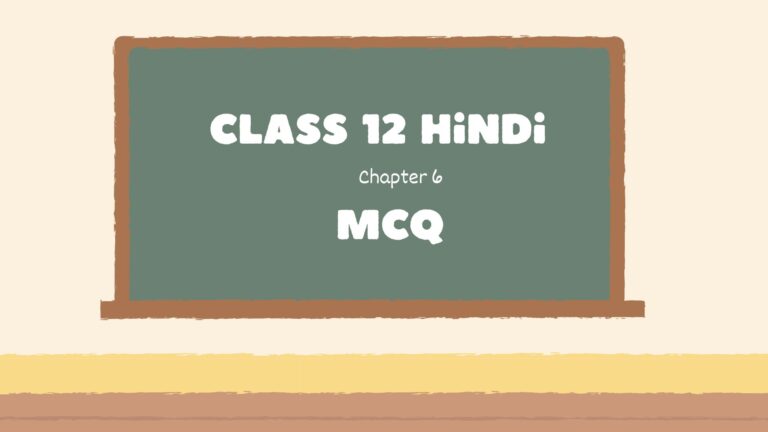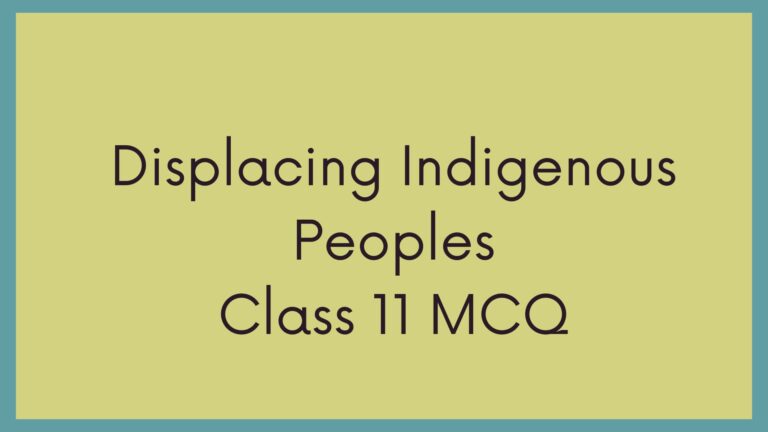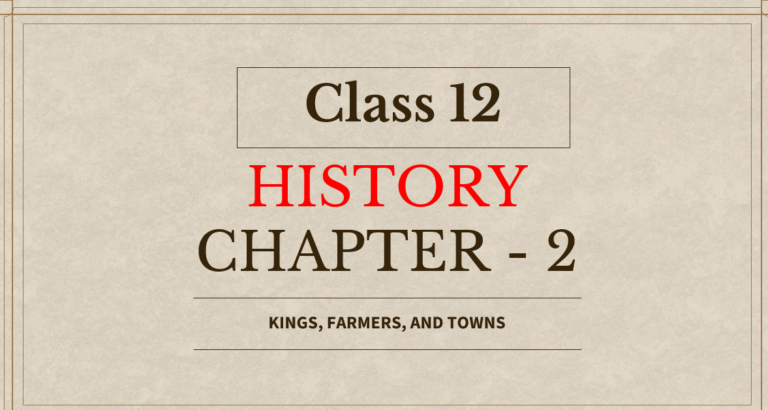Class 11 History Chapter 2 Notes | Writing and City Life Important topics
In this article, you will get Class 11 History Chapter 2 Notes. Writing and City Life: Important topics are also provided based on my experience in class 11. Use these and excel in your exams. Also, check out the detailed videos on our YouTube Channel.

1. Introduction
- Mesopotamia → “land between rivers” (Tigris & Euphrates).
- First cities appeared around 3000 BCE.
- Significance: Birth of urban life, writing, temples, trade.
- Writing became tool of power, record-keeping, culture.
Class 11 History Chapter 2 MCQ | Writing and City Life Important MCQ
Class 11 History Chapter 2 Notes
2. Mesopotamian Cities
(a) Geography
- Located in present-day Iraq.
- Fertile soil → agriculture supported city growth.
- Irrigation canals important for farming.
(b) Early Urban Centres
- First cities: Ur, Uruk, Nippur.
- Centres of political, religious, and economic activity.
3. Temples and Kings
Temples (Ziggurats)
- Large step-like structures.
- Religious + economic centres.
- Surplus grain stored here → redistributed.
Kingship
- Early rulers = priests.
- Later rulers = kings, claiming authority from gods.
- Religion used to legitimise power.
4. Life in Mesopotamian Cities
- Society stratified:
- Priests & Kings
- Officials & Scribes
- Artisans & Farmers
- Slaves
- Agriculture main occupation → wheat, barley, dates.
- Trade: due to lack of stone, metals, timber → exchanged with neighbouring regions.
5. Invention of Writing
(a) Early Script
- Around 3200 BCE.
- Began with pictographs → signs representing objects.
(b) Cuneiform
- By 2600 BCE → wedge-shaped signs pressed with reed stylus on clay tablets.
- Called Cuneiform (from Latin “cuneus” = wedge).
(c) Uses of Writing
- Recording taxes, trade, surplus.
- Legal codes, royal orders.
- Education: scribes trained in edubba (tablet houses).
- Literature: Epic of Gilgamesh.
6. Hammurabi’s Code (1792–1750 BCE)
- One of the earliest written law codes.
- Inscribed on stone steles.
- Principles:
- Justice based on social class.
- Punishments unequal for nobles & slaves.
- Example: “Eye for an eye, tooth for a tooth.”
7. Economy & Technology
- Agriculture + irrigation = backbone.
- Trade → with Anatolia, Persia, Indus Valley.
- Technology:
- Invention of wheel → transport, pottery.
- Bronze tools & weapons.
- Mathematics: sexagesimal system (base 60) → hours, minutes.
8. Cultural Life
- Literature: Epic of Gilgamesh.
- Religion: Polytheistic (many gods, nature deities).
- Temples (ziggurats) also centres of festivals, rituals.
- Art: cylinder seals, jewellery, statues.
Tables for Quick Revision of Class 11 History Chapter 2 Notes
Table 1: Mesopotamian Society
| Class | Role |
|---|---|
| Priests/Kings | Political & religious heads |
| Scribes | Record keepers |
| Farmers | Agriculture backbone |
| Slaves | Forced labour |
Table 2: Writing Stages
| Stage | Features |
|---|---|
| Pictograph | Drawings of objects |
| Cuneiform | Wedge-shaped signs |
Table 3: Mesopotamian Achievements
| Field | Contribution |
|---|---|
| Writing | Cuneiform, literature |
| Law | Hammurabi’s Code |
| Maths | Base 60 system |
| Technology | Wheel, bronze |
📅 Timeline
| Year/Period | Development |
|---|---|
| 3200 BCE | Writing (pictographs) begins |
| 3000 BCE | Cities like Ur, Uruk flourish |
| 2600 BCE | Cuneiform script |
| 1792–1750 BCE | Hammurabi’s rule & law code |
| 1st millennium BCE | Decline of Mesopotamian cities |
9. Importance of Mesopotamian Civilisation
- First urban civilisation.
- Writing gave rise to history, law, administration.
- Cities became centres of trade & culture.
- Legacy: time division (60 minutes), written laws, literature.






